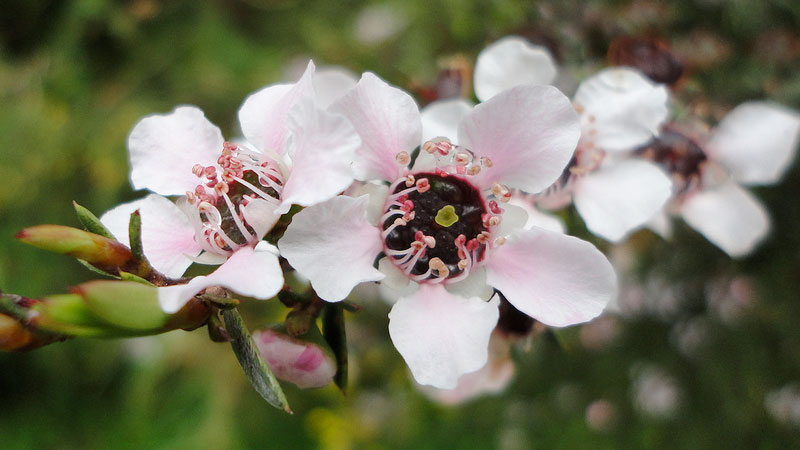 Tea Tree oil has been around forever. I have heard that Australian Soldiers during World War 2 carried the amazing oil in their packs!
Tea Tree oil has been around forever. I have heard that Australian Soldiers during World War 2 carried the amazing oil in their packs!
For Health
- Use a dab to treat acne.
- An anti-fungal for treating Athlete’s Foot, eczema, various yeast infections, etc.
- An antiseptic to be used on cuts and burns.
- An anti-viral: it may lessen the symptoms of colds and flu. Try using a few drops in the bath.
- Add to a vaporizer to loosen chest congestion.
- Add a small amount to shampoo to destroy head lice.
- A small amount added to your bath can help with persistent body odor.
- Treating sinus infection.
- For dandruff and dry scalp.
- In the form of aromatherapy, tea tree oil is used to treat colds, persistent coughs, acne, toothaches, and sunburn.
Tea tree oil, or melaleuca oil, is an essential oil with a fresh camphoraceous odor and a color that ranges from pale yellow to nearly colorless and clear. It is taken from the leaves of the Melaleuca alternifolia, which is native to Southeast Queensland and the Northeast coast of New South Wales, Australia. Tea tree oil should not be confused with tea oil, the sweet seasoning and cooking oil from pressed seeds of the tea plant Camellia sinensis (beverage tea) or the tea oil plant Camellia oleifera.
The indigenous Bundjalung people of eastern Australia use “tea trees” as a traditional medicine by inhaling the oils from the crushed leaves to treat coughs and colds. They also sprinkle leaves on wounds, after which a poultice is applied. In addition, tea tree leaves are soaked to make an infusion to treat sore throats or skin ailments.
Use of the oil itself, as opposed to the unextracted plant material, did not become common practice until researcher Arthur Penfold published the first reports of its antimicrobial activity in a series of papers in the 1920s and 1930s. In evaluating the antimicrobial activity of M. alternifolia, tea tree oil was rated as 11 times more active than phenol.
The commercial tea tree oil industry was born after the medicinal properties of the oil were first reported by Penfold in the 1920s. It was produced from natural bush stands of M. alternifolia that produced oil with the appropriate chemotype. The plant material was hand cut and often distilled on the spot in makeshift, mobile, wood-fired bush stills.
Production ebbed after World War II, as demand for the oil declined, presumably due to the development of effective antibiotics and the waning image of natural products. Interest in the oil was rekindled in the 1970s as part of the general renaissance of interest in natural products. Commercial plantations were established in the 1970s and 1980s, which led to mechanization and large-scale production of a consistent essential oil product.
Although tea tree oil normally is extracted from Melaleuca alternifolia commercially, it can also be extracted from Melaleuca dissitiflora and Melaleuca linariifolia.















Leave A Comment
You must be logged in to post a comment.